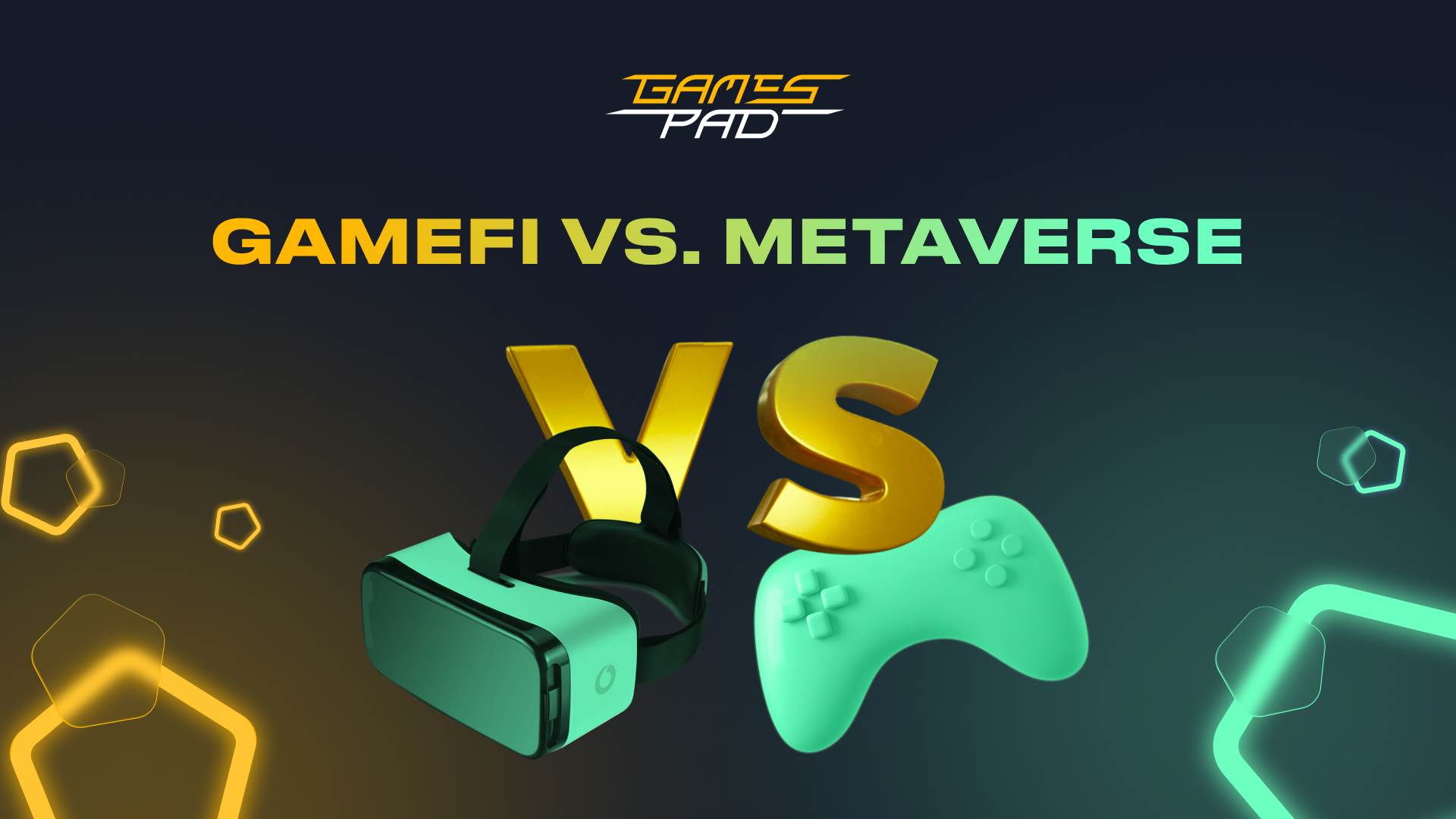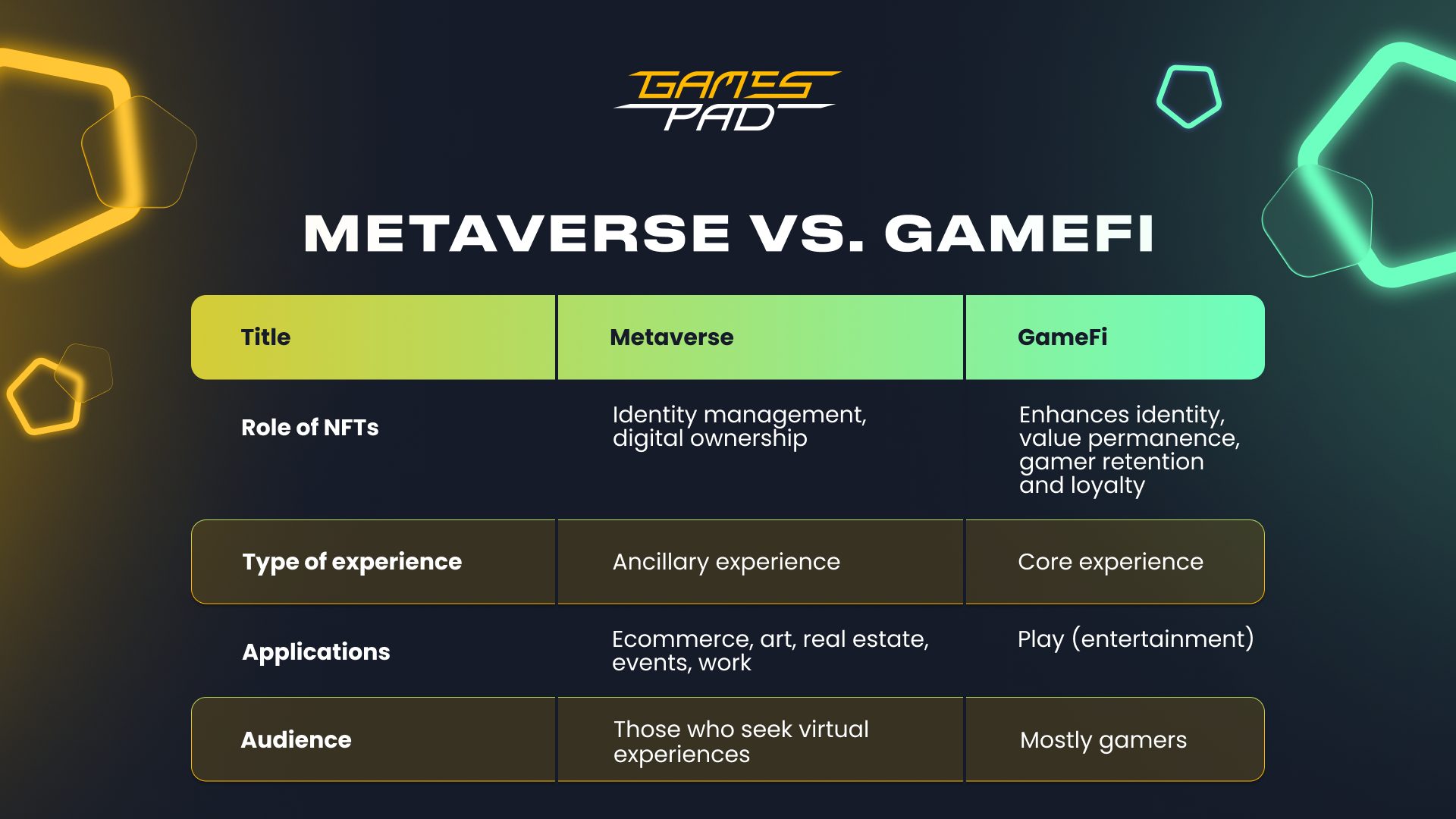
Metaverses and blockchain-based gaming platforms are rapidly gaining popularity. Learn more about the current concept of the Metaverse, skyrocketing GameFi sector, their differences, and how NFT connects gaming and Metaverse.
Some of the most frequently asked questions of 2022 definitely are: ‘what is the Metaverse? and ‘what is GameFi?’. Undoubtedly, it is interesting to know if there is a link between these concepts. The idea of the Metaverse caught the attention of the masses and gained real buzz in 2021, mainly after Facebook renamed itself Meta.
While tech nerds and crypto enthusiasts have been dwelling about the Metaverse and gaming for quite some time, those who are not that tech-savvy are having a hard time understanding such statements. To keep our investing community ahead of these exciting trends, we will explain more about the Metaverse and GameFi. Take a look!
What Are the Differences Between Metaverse and GameFi?
What is a defining feature of the metaverse? The Metaverse is not something abstract, not a castle in the sky, but a real virtual space based on the real Internet world of the future. The scope will also expand from general entertainment to every corner of the Internet. However, the current stage of development of the Metaverse is still at an early stage, and it still takes a long time to develop and improve it. However, there is no doubt that the Metaverse is rapidly gaining popularity and becoming a hot investment topic. As for GameFi, which stands for gaming and finance, it is currently a very intuitive window for users to understand the Metaverse. It originated in the gaming industry, but in the future, it will affect all aspects of human social life, such as social interaction and finances.
Metaverse vs. GameFi
Take a look at more differences between the Metaverse and GameFi:

What came first, Metaverse or GameFi?
The Metaverse concept can be traced back to the novel Snow Crash, published in 1992 by renowned American science fiction author Neal Stephenson, based on the prevailing opinion in the industry.
The components of the Metaverse technology have already been developed within online video games. The Second Life virtual world platform, released in 2003, is often described as the first Metaverse. It incorporated many social networking aspects into a persistent 3D world with the user represented as an avatar. However, historical claims about the development of the Metaverse started shortly after the term was coined. As for GameFi, it has been rapidly taking over the traditional gaming industry since the rise of Axie Infinity, a monster-battling game inspired by Nintendo’s beloved Pokémon series. It was released in March 2018.
Is GameFi Part of the Metaverse?
Games can be published as standalone applications or as part of the Metaverse. Metaverses are virtual worlds where people can play games, attend events, do shopping, and much more. Many GameFi platforms are part of the Metaverse to ensure user retention.
However, don’t forget that the relationship between the Metaverse and GameFi needs to be well established for the GameFi economics to work. GameFi attracts players for the experience, and the Metaverse forces them to spend money using gaming and/or ecosystem tokens.
Is Metaverse only about gaming?
Although it is still uncertain what the precise nature of the Metaverse will be in the future and how it will actually develop, one thing is certain: the Metaverse is already much more than gaming. With an immense, even boundless, impact on economies and societies worldwide, it encompasses all forms of entertainment, fashion, health and fitness, work, real estate, and more. Look here to top gamefi projects to invest right now!
NFTs in GameFi
It is impossible not to note the popularity of non-fungible tokens or NFTs. In fact, this seems to be the most significant innovation in the crypto universe in 2021 and 2022.
Since people in the Metaverses can interact with each other and play, there is a need for exchange, reward, and payment methods. With that in mind, we can see that non-fungible tokens (NFTs) play a crucial role there as the Metaverse offers a virtual space and a virtual economy.
With GameFi, players have to participate in the monetization of games by playing them. It is the main difference from regular games, where only publishers make a profit. The Play-to-Earn (P2E) concept is used for this earning concept as gamers receive tokens and/or NFTs for achieving different accomplishments. These rewards can also be exchanged for other cryptos or fiat money.
GameFi offers different types of games. Ranging from role-playing games (RPG) to card games, players should usually invest in games before they are allowed to play. Buying in-game tokens or NFT characters are among the most popular investment methods required by these games.
How to Invest in GameFi?
GameFi is leading the crypto universe that brings not millions but even billions of dollars yearly. So besides revolutionizing the entire gaming industry technology-wise, it is also presenting itself as a highly profitable investment endeavor.
There are different ways to invest in GameFi projects:
- Passive investments, including farming and staking;
- Investing in NFTs in GameFi and Metaverse projects;
- Investing in GameFi projects at their IDO (Initial Dex Offering) stage.
These investing modalities can offer impressive returns compared to traditional fiat money investments. Financing IDOs have shown to be a flexible beginner-friendly model that also provides reasonable profits.
IDO (Initial Dex Offering) is a method of subsidizing used by crypto-based initiatives and entrepreneurs. The startups can raise funds by issuing an IDO token or coin on the Decentralized Liquidity Exchange platform. IDO tokens represent assets with a concrete price in cryptocurrency or fiat currency.

How to Invest With GamesPad
GamesPad is a holistic gaming and metaverse-focused ecosystem that offers a game incubator, launchpad, and NFT marketplace. As a community-oriented company, we focus on providing our community with the best deals, always doing our own thorough research and conducting due diligence before launching any project on our platform.
If you want to grow your crypto portfolio with GamesPad by investing in exciting IDO deals, staking and farming $GMPD tokens, or purchasing our unique NFTs, you can start doing it right away. Our ecosystem is based on the BSC blockchain, and we add up security by requiring that every new user goes through a KYC (Know Your Customer) procedure. Here are several steps to get started:
- Create a wallet
- Register and complete KYC (Know-Your-Customer procedure)
- Activate your tier on GamesPad:
3.1. Buy $GMPD tokens
3.2. Purchase the GamesPad NFT
3.3. Lock in $GMPD tokens and NFTs on the platform
- Join the IDO deal on GamesPad!
You can also stake and farm your $GMPD tokens to activate your tier. Read more in this step-by-step guide to investing with GamesPad.
Wrapping up
Even though the Metaverse development is still at an early stage, through the GameFi window, we see the open interconnection, value sharing, and many other exciting aspects of this virtual world.
We see the Metaverse is growing and developing with VR and AR games adopting the P2E concept to reward their players and users. GameFi plays a crucial role in the development of the Metaverse as we already see more users adopting the P2P concept, therefore digging deeper into the Metaverse. Check here what are the differences between gaming and crypto gaming.
Start investing in the most impactful crypto gaming, NFT and metaverse projects with GamesPad. Learn how in this comprehensive tutorial!
Disclaimer. This material should not be construed as a basis for making investment decisions or as a recommendation to participate in investment transactions. Trading digital assets may involve significant risks and can result in the loss of invested capital. Therefore, you must ensure that you fully understand the risk involved, consider your level of experience, investment objectives, and seek independent financial advice if necessary.